- Home
- James A. Michener
The Bridge at Andau Page 4
The Bridge at Andau Read online
Page 4
“But again it was the economy of the nation itself that made me first question communism. Our country was being used as an indecent experiment to strengthen Russia; I cannot recall a single decision that was ever made in terms of Hungary’s good. With our productive capacity and our hard work we ought to be able to provide our people with a good living. We used to, when we knew less and worked less. But now everything goes to Russia.”
It was this gloomy discovery that drove Peter Szigeti to some hard thinking … still in the loneliness of his own mind, for he knew no one to trust.
“I first looked at the AVO. It had numerous organizations, each checking on the other. Then a supreme AVO group checked on the setup and it was checked by the Russians. I wondered why, in a scientific world, so much suspicion was required.
“Then I looked at communism itself and I saw that it was an organization of gangsters banded together to protect themselves and to get the good things of the nation into their control. I never saw a single unselfish act by a communist.
“Finally I looked at the life of fear we led and I concluded, ‘Life under communism has no hope, no future, no meaning. Yesterday, today and tomorrow are all lost!’ The day I decided that, I joined the Petofi Club.”
In 1848 the Hungarians revolted against their Austrian masters, and during a series of bloody engagements their spirits were kept alive by the poems of an inspired young man, Sandor Petofi. He became then, and has remained, the beacon light of Hungarian patriotism and the symbol for all who seek freedom. He led a heroic life on the battlefield and wrote a series of poems which exactly mirror the Hungarian patriot’s yearning for freedom. Therefore, when a dedicated young communist like Peter Szigeti decided to join a club named after Sandor Petofi, it was a milestone in his life.
The Petofi Club in Budapest was definitely Marxist, and its members were communists, but they believed that what Hungary needed was a liberal, Hungarian communism divorced from Russian domination. Specifically, they wanted Hungarian wealth to stay in Hungary, and secondly, Soviet secret police to stay in Russia. Membership was composed of poets, playwrights, novelists, artists, actors and a few leading communist philosophers. Often the members were in their sixties; some were promising youths. They were not a daring group, but they did have access to a publication which dealt honestly with major questions. This was a literary magazine published by the Writers’ Association, but all the writers who controlled it were secretly members of the Petofi Club, and they made their journal so exciting that its 70,000 edition was snatched off the newsstands as quickly as it appeared. There were, however, mainly convinced communists in the Petofi Club, and it could not possibly be considered a reactionary group.
In the summer of 1956, when Peter Szigeti joined the club, discussions of the economic and moral ruin of Hungary under communism were drawing to a head. Holding to a philosophical rather than a revolutionary line, the Petofi men maintained an incessant pressure on the government, and as they talked they began to convince themselves that some radical change was necessary.
Says an older Petofi Club member, “In my travels through the countryside I discovered to my sorrow that I had lost the capacity of enlisting the interest of young people. They were not reactionaries. They were not fascists. But they expected me to say something powerful and honest about their problems. I began to ask myself, ‘Have we older communists failed to give any kind of leadership?’ Out of respect for myself as a philosopher I started to speak critically of the tragedy in which Hungary was engulfed. And the more I spoke, the more I felt the thrill of having young people drawn toward me. In this way they forced my re-education. On one memorable night at a meeting in the city of Gyor, I allowed myself to be cross-questioned for hours, and gradually I was driven into a position where I had to admit to myself—if not to the students—that our present system was bankrupt.”
It was with such minds that Peter Szigeti now found himself in contact. With increasing awareness of the revolutionary position into which these quiet men were forcing him, he continued to associate with them. Ironically, they held some of their most provocative meetings in the building of the communist youth organization, with AVO men on the next floor.
By mid-October, 1956, it was apparent to all Petofi Club members that some kind of change was inescapable. Hungarian communists would have to break away from Russia, and they would have to liberalize their government so completely as to make it a liberal socialist state rather than a communist one. Peter Szigeti was one of the first to acknowledge this openly.
“I was ready for the revolution,” he says. “I was even ready to launch it.”
On October 23, while the university students were revising and polishing their list of grievances, the braver spirits of the Petofi Club were producing their own demands, and to Peter Szigeti fell the task of putting them in good written form. “We proposed measures which would have liberalized Hungary and made it a decent place in which to live.” The government, of course, refused to take the Petofi proposals seriously.
It was with cold satisfaction, therefore, that Szigeti heard about the riots at the radio station and at the offices of the Szabad Nep. “We offered them a peaceful way out. Now there’ll be war.”
He was therefore expecting trouble toward noon on the twenty-fifth when he joined an immense crowd that had begun shouting freedom slogans in front of the great neo-Gothic Parliament building. “The people won’t leave this time without some kind of assurances from the government,” he mused.
No officials appeared, so he idled the morning away studying the square. “I could see the AVO men with machine guns on the roof of Parliament. To the north more guns lined the top of the Supreme Court building, and right above where I stood the offices of the Agricultural Ministry were bristling with guns. I remember thinking, ‘After the defeat the AVO men took at the radio building, they won’t wait for trouble today. They’ll start it.’ ” And although Szigeti could not see them from his position at the back of the crowd, along the foot of the Parliament building stood a menacing line of powerful Russian tanks manned by crack Russian troops, whose officers were beginning to wonder if their men had not come to like the Hungarians too much, after long tours of duty in that hospitable land.
In spite of the menacing guns, people began calling for Imre Nagy, to whom they wished to present various petitions. But whenever those behind, like Szigeti, tried to push forward, those in front came face to face with the Russian tanks and pushed back. There were no cries, no menacing gestures, but nevertheless, out of the blue October sky, an AVO sharpshooter atop the Supreme Court building grew nervous and fired a single shot into the crowd.
With fantastic ill luck this bullet hit a baby in the arms of its mother and knocked both the dead child and the mother onto the pavement. In wild grief she raised the baby high in her arms and rushed toward a Soviet tank. “You have killed my child. Kill me.” Her anguished protest was drowned by the sound of AVO guns firing more shots into the crowd.
It is absolutely verified that the tank captain, who had grown to like Hungarians, raised his cap to the distraught woman and then turned to wipe the tears from his eyes. What he did next made a general battle in Budapest inevitable, for he grimly directed his tank guns against the roof of the Supreme Court building, and with a shattering rain of bullets erased the AVO crew stationed there. Now even the Russians were fighting the AVO men.
Peter Szigeti was standing near the Ministry of Agriculture buildings, on the opposite side of the square from the Supreme Court, and he could see on the faces of the AVO men stationed above him the horror that overcame them when they realized what the Russians had done. They were more horrified when they saw the Russian tank commander revolve his guns toward them, and with a nest of heavy machine guns they started spraying bullets haphazardly into the defenseless square. They had to fire directly over Szigeti’s head, and he could hear the bullets screaming past.
More than six hundred citizens fell in those terrible moments, a
nd after that everyone knew that this fight of the AVO men against the people of Budapest would know no truce.
Proof came when an ambulance, which had been stationed in Bathory Street to the south, rushed its doctors toward the dying who cluttered up the square. No sooner had the doctors moved into the crowd, trying to drag the wounded to safety, than the AVO men cut them down with bullets.
Peter Szigeti, who from the year 1946 had been a fair-haired boy of Hungarian communism, who had reaped the riches that the dictatorship offered, and who could logically aspire to the highest posts, saw this massacre of the doctors with overpowering revulsion. In a kind of senseless rage, something he had learned never to indulge in, he began screaming at the AVO men above him, “Assassins! Dogs! Swine!”
Then, seeing a Russian soldier who had moved away from the line of tanks and who was not firing his rifle, he rushed up to the man and begged for the weapon. The Russian hesitated a moment, then saw the increasing mounds of bodies in the square, and, acting on the spur of the moment in defense of a people he liked, handed Szigeti his rifle.
The chosen young man of communism, unable to stomach it any longer, hefted the rifle to his shoulder and started blazing away at the AVO men in the Ministry of Agriculture.
3
At the Kilian Barracks
When communism faced its first great test in the satellite countries, it found that young people whom it had indoctrinated—like Josef Toth—had turned against it. Next it discovered that once-dedicated intellectuals whom it had pampered with promises of high position—like Istvan Balogh and Peter Szigeti—had not only rejected it but had also taken arms against it.
Russian leaders must surely have been depressed by such evidence of long-range failure, and committees must now be searching for excuses to explain away this major psychological defeat at the hands of those whom the system had reason to trust. But the Kremlin dictators must have been shaken with a mortal fear when they heard how the trusted soldiers of communism reacted when the red system came under attack. For years the red armies had been given special consideration, special pay and special attention from communist commissars. Here is how the soldiers defended communism in its moment of peril.
The city of Budapest, where this test took place, provided a dramatic setting. It is located on the banks of the Danube, some miles below the point where that historic river makes its sudden ninety-degree swing to the south, so that when the river cuts Budapest in half, it is running north and south, not east and west as it does for the remainder of its course.
Long before Roman legions first penetrated to this lonely outpost, a small trading community had grown up on the west bank of the Danube, and it was this inconspicuous village that expanded into a small but notable Roman establishment. Here hot mineral waters gushed out of the ground and allowed the Romans to build fine baths, followed by theaters and spacious public buildings. Thus Buda, on the west bank, became an outpost of civilized Europe. Long after the fall of Rome had called away the legions, and in spite of the inevitable decline of the baths and the buildings, Buda remained a kind of lonely outpost, always tenuously in touch with Europe.
Later, on the east bank of the river, the little village of Pest grew up, and its function was to provide a trading center for the great plains that stretched away eastward toward Asia. For centuries these two settlements stared at each other across the Danube, each expressing a gentle contempt for the role played by the other. Buda was a patrician settlement built on lovely hills and marked by fine trees. Pest was a rustic trading post on the great Hungarian plain. It had little beauty to commend it. Buda, for its part, was an ancient city with narrow streets, houses dating back a thousand years, and historic castles, while Pest was content to be a thriving commercial city with factories, power and wealth.
Ultimately the two communities joined to form the capital of Hungary, where in the nineteenth century a vivid social life grew up which challenged and in some ways surpassed that of Vienna. Budapest and Vienna were natural rivals. Each was capital of its half of the Austro-Hungarian empire, and they were only a hundred and seventy miles apart. Good trains connected them, as did the famous pleasure boats of the Danube, which drifted down from Vienna to Budapest laden with rich food and orchestras. Men and women went to Vienna to display their importance, to Budapest to have a good time, and soon the city was known as the little Paris.
Citizens of the dual monarchy delighted in comparing the two capitals. Budapest by common consent had much the lovelier women and the livelier parties. Vienna, on the other hand, was more sedate, and its cultural life, in the formal sense of opera, concert and theater, more illustrious.
Budapest was held to have a better climate, more tasty cooking, finer dancing, more natural vivacity, a wealthier aristocracy and a more oppressed citizenry. Vienna was more religious, had better music, richer desserts and more officials. The architecture of the two cities was about equal, but no one was ever known to claim that Vienna had the natural beauty of Budapest.
Marriages between the better families of the two cities were common, and no stigma attached to the Viennese who was lucky enough to catch the rich daughter of some Hungarian nobleman; but because of the superiority of Viennese opera, theater and museums, Austrians always tended quietly to consider their Hungarian neighbors as country cousins. Actually, in the middle years of the last century Vienna was the rather stuffy imperial center which maintained the pretensions of ruling the Austro-Hungarian empire, whereas in truth Budapest was the scintillating source from which new ideas, new creative impulses and the effective rulers of the empire came. Hungarians were apt to remark, “A sensible man lives in Budapest when he’s young and dies in Vienna when he’s old.” To which the classic Viennese reply was, “Asia begins three miles east of Vienna.”
After World War I, Hungary and Austria were split and Budapest became the capital of the larger, more dynamic and potentially wealthier of the two halves. It might have developed into the major capital of Central Europe had not World War II brought about its partial destruction by Russian forces who were attacking German troops that had occupied the city. (It is interesting to observe that Russian propaganda invariably refers to this action as “the Russian liberation of Budapest,” whereas the British-American assault on Vienna, which drove out a large number of Germans with less material damage to the city, is always called “the American destruction of Vienna.”)
Under communism the city was rebuilt and resumed its role as a magnificent capital. Anticommunists would be ill advised to ignore the considerable real gains made in Budapest during the first days of communism. Schools and universities were thrown open to the children of peasants, good apartments were made available to those who could not previously afford them, and for a while the benefits which communism is supposed to provide seemed attainable. There were good theater, sparkling ballet and excellent music. Budapest watched new buildings go up, imposing monuments to Russian soldiers, a big, rugged statue of Stalin and a new bridge, dreadfully ugly but serviceable.
Budapest was a unique city, handsomely distributed over the hills of Buda and the plains of Pest. It was dominated by the beautiful Danube, which is probably loveliest at this spot, and whose inviting banks were the center of the city’s social life. It was also unique in another way, for it was cut into three concentric segments by three handsome concentric circular boulevards. There was the tight little inner boulevard which started haphazardly in Buda, crossed the Danube on a fine bridge, swung around a tight circle in Pest, and scurried back across the Danube on a second bridge which deposited it in the heart of Buda. There was also a very spacious outer boulevard which accomplished the same journey, but its two bridges were miles apart.
The pride of Budapest was the middle boulevard. It started behind Gellert Hill, which dominated Buda, and after making a wide swing among the other hills of Buda, crossed the Danube on the Margaret Bridge and then formed one of the main thoroughfares of Pest, where it was called in turn Lenin Bouleva
rd, Jozsef Boulevard and Ferenc Boulevard, until at last it came back across the Danube on the famous Petofi Bridge, named after the Hungarian poet, ending in Moricz Zsigmond Square, of which we shall hear a good deal later.
These three circular boulevards thus cut Budapest into a kind of target board, like those used for dart games. Communication was aided by other straight, broad streets which radiated out from the center of both Buda and Pest. Three of these straight streets became famous during the battle for Budapest: Stalin, Rakoczi and Ulloi. They were all in Pest, where the major fighting occurred, and as one might expect, where these fine streets crossed the middle circular boulevard there was bound to be trouble. We have already seen that at the corner of Rakoczi Street and Jozsef Boulevard, where the offices of the newspaper Szabad Nep were, one of the first riots occurred, with the destruction of the newspaper building, the burning of the communist bookstore and the humiliation of Stalin’s statue.
Farther down, the middle boulevard crosses broad Ulloi Street, and on the southeast corner stands the ancient Kilian Barracks, a rugged brick-and-plaster building four stories high, with walls more than four feet thick. Here, in prewar days, when the barracks was known as the Maria Theresa Barracks, lived the selected soldiers appointed to the defense of Budapest. Under communism, the barracks housed a large administrative staff of tested officers and served as a processing center for recruits from the Budapest area. It was staffed by a small guard of crack soldiers, and although it could in an emergency house about 2,500, it customarily held only about 400, plus members of the labor battalion, who were not armed. It housed no heavy guns or tanks.
On October 23, a delightful, hell-raising sergeant named Laszlo Rigo occupied room 19 on the second floor of the Kilian Barracks. I think anyone would instinctively like this twenty-two-year-old Hungarian farm boy. His friends called him Csoki (Little Chocolate Drop), because his face was unusually tanned. He had dark eyes, heavy eyebrows, wavy black hair which he used to comb in public, a very large mouth and white teeth. He looked like a tough young kid trying to be Marlon Brando, but he spoiled the attempt by periodically breaking into joyous laughter. He had a good time in life and was so lean and muscular that he was always ready for a fight.

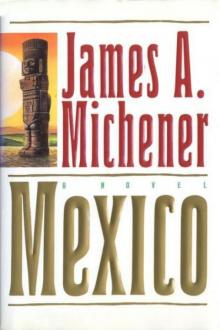 Mexico
Mexico The World Is My Home: A Memoir
The World Is My Home: A Memoir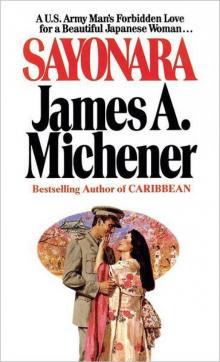 Sayonara
Sayonara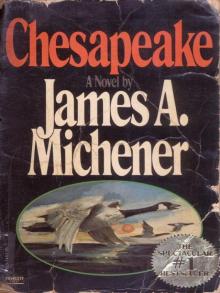 Chesapeake
Chesapeake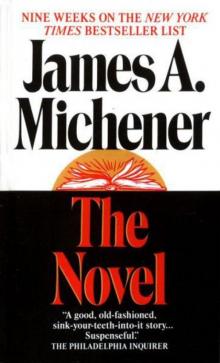 The Novel
The Novel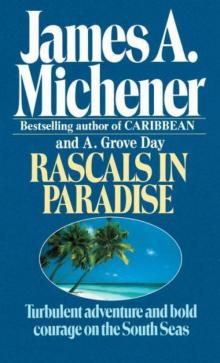 Rascals in Paradise
Rascals in Paradise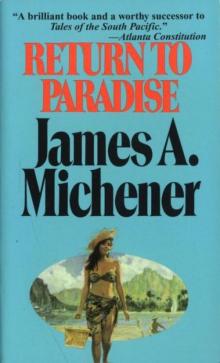 Return to Paradise
Return to Paradise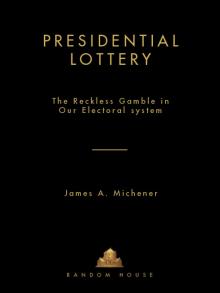 Presidential Lottery: The Reckless Gamble in Our Electoral System
Presidential Lottery: The Reckless Gamble in Our Electoral System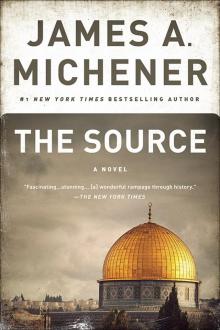 The Source
The Source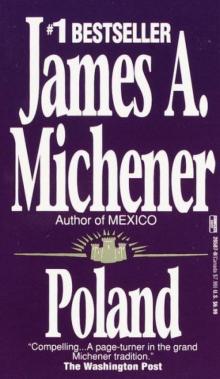 Poland
Poland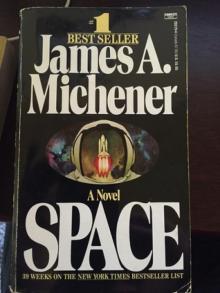 Space
Space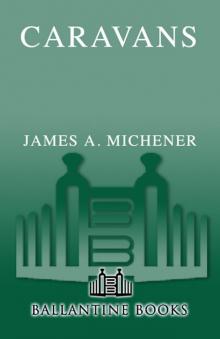 Caravans
Caravans Creatures of the Kingdom: Stories of Animals and Nature
Creatures of the Kingdom: Stories of Animals and Nature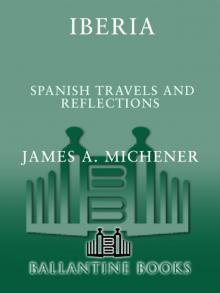 Iberia
Iberia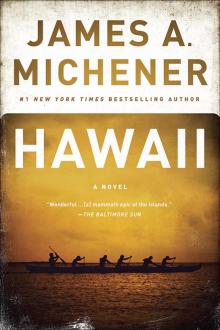 Hawaii
Hawaii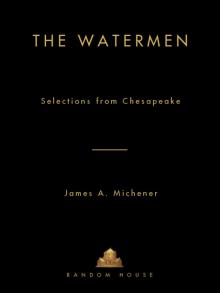 The Watermen: Selections From Chesapeake
The Watermen: Selections From Chesapeake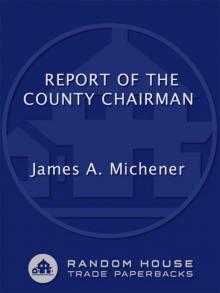 Report of the County Chairman
Report of the County Chairman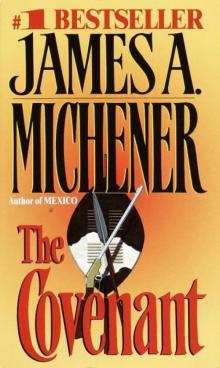 The Covenant
The Covenant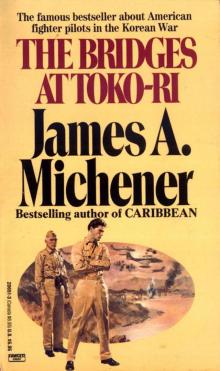 The Bridges at Toko-ri
The Bridges at Toko-ri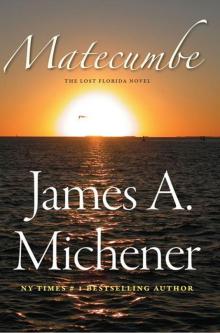 Matecumbe
Matecumbe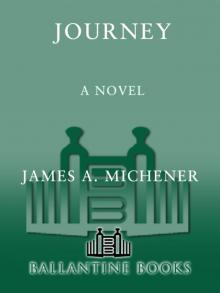 Journey: A Novel
Journey: A Novel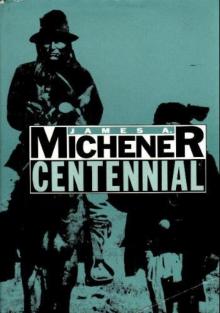 Centennial
Centennial Sports in America
Sports in America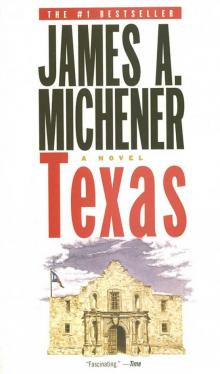 Texas
Texas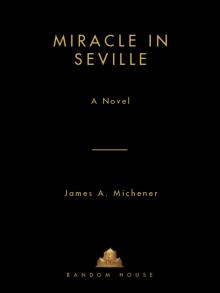 Miracle in Seville
Miracle in Seville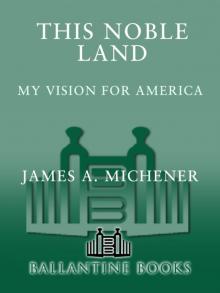 This Noble Land: My Vision for America
This Noble Land: My Vision for America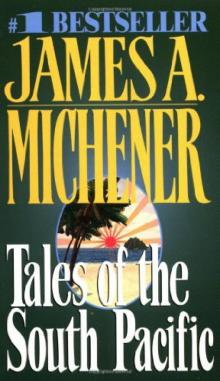 Tales of the South Pacific
Tales of the South Pacific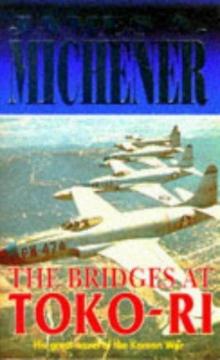 Bridges at Toko-Ri
Bridges at Toko-Ri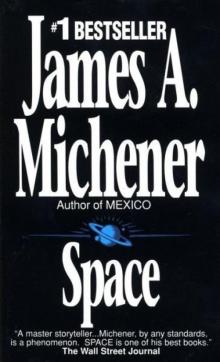 Space: A Novel
Space: A Novel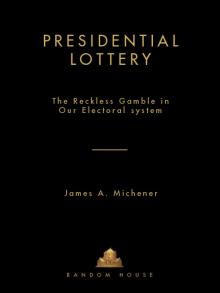 Presidential Lottery
Presidential Lottery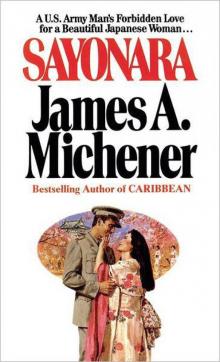 Sayonara: A Novel
Sayonara: A Novel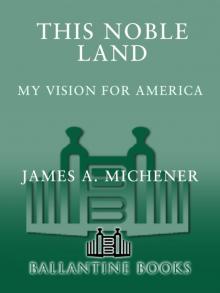 This Noble Land
This Noble Land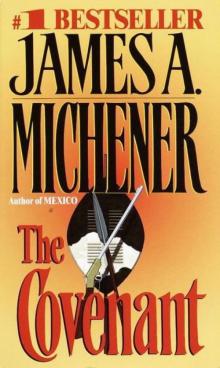 The Covenant: A Novel
The Covenant: A Novel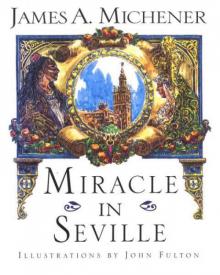 Miracle in Seville: A Novel
Miracle in Seville: A Novel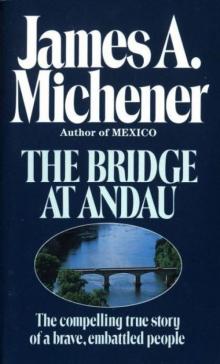 The Bridge at Andau
The Bridge at Andau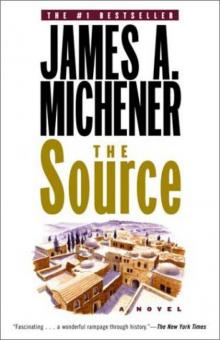 Source
Source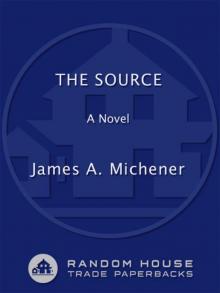 The Source: A Novel
The Source: A Novel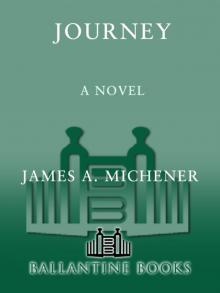 Journey
Journey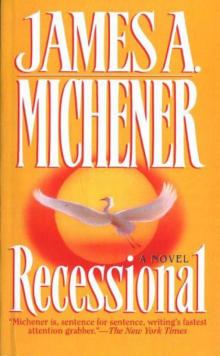 Recessional: A Novel
Recessional: A Novel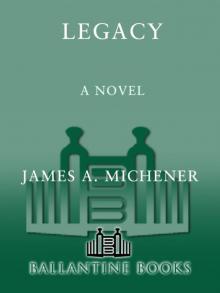 Legacy: A Novel
Legacy: A Novel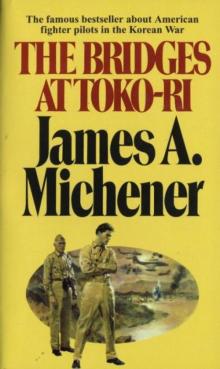 The Bridges at Toko-Ri: A Novel
The Bridges at Toko-Ri: A Novel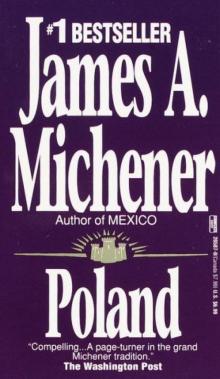 Poland: A Novel
Poland: A Novel